Is LTE in our area?
Of course, because almost all operators have already announced support for LTE and the creation of a variety of tariffs. And the first about the network of a new generation, said "Megaphone". Back in spring (or early summer?) I saw posters about 4G all over Moscow, about speed increases many times and so on ... But somehow I didn’t pay attention to it, I thought: "Well, that 3G, that 4G is one FIG!" . I use the services of the MTS and with the mobile Internet, of course, it’s a disaster - everything loads slowly, you don’t listen to the music in the subway, there is no network in the subway ... I’m waiting for the opportunity to switch to another operator without losing the number. And my friends say - what's the point? Everywhere with the mobile Internet is a misfortune - that MTS, Beeline, MegaFon ... And now there was an opportunity to check in person all the charms of LTE from MegaFon, and even on an operator smartphone, originally adapted for data transfer to network of the operator.

Of course, I’m a progressive girl who understands gadgets, but until recently I didn’t know (and didn’t understand) the difference between 3G and LTE (otherwise known as 4G). I think that the majority here should not describe the well-known advantages and disadvantages, but, nevertheless, I am sure that there are those who, like me, do not really understand all this. Let's figure it out together? :)
So, LTE is the technology behind the fourth generation cellular networks. Compared with the 3G family of technologies, the specified communication standard should a) provide a much higher data transfer speed in both directions and b) at the same time, it doesn’t have so much impact on the power consumption of devices as it was in the case of their work in 2G and 3G networks.
Well, in theory, everything looks very good, but what about in practice?
The most affordable tariff option for MegaFon with high-speed Internet is called “Internet S”: you pay 390 rubles ($ 11) per month and get 3 GB of traffic at maximum speed (and what is the maximum speed here - I'll tell you a little later). As soon as these 3 GB are consumed, the Internet access is suspended and automatically resumes from the beginning of the new month, or when the “Prolong Speed” options are activated, and this, of course, is an additional waste of money.
At first, I wanted to be indignant, they say, just like that - only 3 GB, but for the sake of interest I decided to see how much traffic I usually “run” in a month. So, for six months, the maximum figure was 1 GB exactly! And this is despite the fact that I constantly update my mail, look through (and upload) photos on Instagram, sit on social networks (including listening to music on VKontakte, even though it’s with my current operator this is tantamount to torture), download files of various sizes ... In general, such an active Internet maniac. Therefore, I think, 3 GB is more than enough and still remains :)
And to whom 3 GB is not enough, they can choose the “Internet M” tariff, there is already 6 GB of traffic, but the corresponding cost is 690 rubles ($ 20) per month. Do you need it?
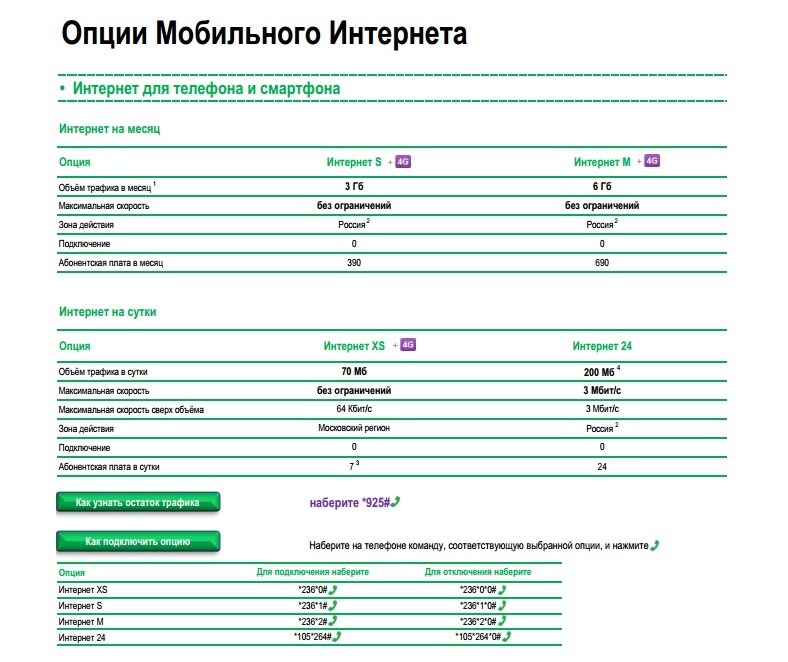
So, with the tariff option sorted out. We turn to the most important thing - to the Internet and data transfer speeds.
I will begin, perhaps, with speed measurements using the Speedtest program (we all love to look at tsiferki, right?). The maximum data reception speed reached 17.28 Mbit / s, and transmissions - 19.74 Mbit / s on Lyublinskaya Street (Lyublino district, Moscow). I don’t know if it is possible to get a better result, but I didn’t achieve more. On the Internet, I read both less and more impressive results. I note that if you drive away from Lublinskaya Street inland, the Internet starts to disappear, and testing is sometimes impossible, because the program says that there is no connection - yet, the prevalence and breadth of coverage of the new generation leaves much to be desired.
The minimum speed I got when going down the Petrovsko-Razumovskaya metro station: data loading was 3.89 Mbit / s, and the transfer was 0.99 Mbit / s. In principle, it is understandable - in the subway, it’s not that there’s a problem with the Internet, but in general there’s a lot of trouble with communication (there are a lot of people).
')
Below are screenshots of measurements in different places in Moscow:
1) In an office building (area near metro station Petrovsko-Razumovskaya)
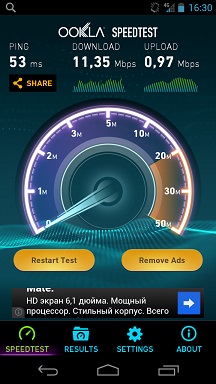
2) On the street (district near metro Petrovsko-Razumovskaya)

3) When going down the Petrovsko-Razumovskaya metro station
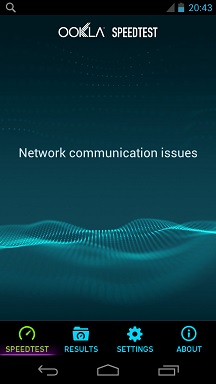
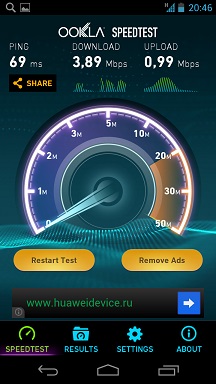
4) On the Red Square
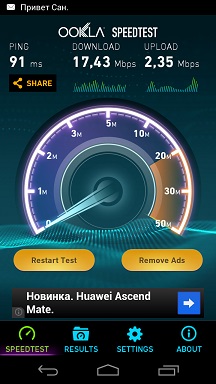
5) On the street (Lublino district)
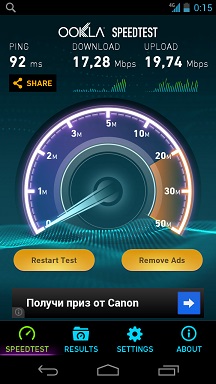
6) Houses (Lublin district)

4G speed measurements were carried out on the MegaFon 4G Turbo smartphone. This smartphone is positioned primarily as a solution for LTE networks from them, we will say, “author” (and, of course, it works only with a megaphone SIM card).
I also decided to check what the speed will be if you insert a SIM card into a smartphone where there is no LTE support. In the role of the experimental made Highscreen Alpha Ice, these are the results:
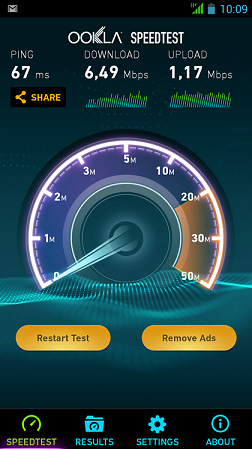
And now, for comparison, the MTS data transfer rate of the mobile Internet:
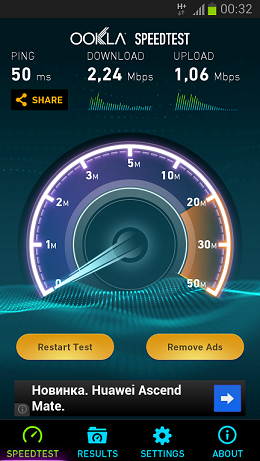
Called, feel the difference.
And now my personal impressions and experience of use:
• pages load in 3-4 seconds (as on a smartphone with LTE support, what is without it);
• social networks are updated in an instant;
• it is a pleasure to download programs from Google Play - 11 MB downloaded in just 8 seconds;
• music in “VKontakte” is loaded completely in 1-2 seconds;
• a five-minute video in HD quality on YouTube, you can safely watch and not be afraid that the video will not have time to upload to the right moment.
In general, after the brake internet from “you know who”, 4G from MegaFon is a real bliss and just an ode to speed! Seriously! And for such a speed it is not a sin to pay 390 rubles a month, although, of course, I would still like the option to be cheaper anyway.
I would like to tell a little about the MegaFon 4G Turbo smartphone, which was the main device for testing the LTE network.
This unit can be attributed to budget solutions, with average characteristics, among which LTE support stands out, which is currently very rare among budget smartphones.

I don’t see any reason to talk about the bundling - everything is standard: a charger, a USB cable, a wired hands-free headset, and a user manual.

Externally, 4G Turbo does not look quite normal. The front is a completely impersonal device, resembling a huge number of other modern smartphones. The only hint of the designer elegance in which is a thin metal edge, ringing the front panel around the edges. But there are already some differences behind: first, the upper part of the case where the camera is located is a couple of millimeters thick (about 10-11 mm), secondly, the smartphone has a non-removable battery, and in general it is non-separable, only a small lid opens Once in the enlarged part of the case, there are “sockets” for SIM and microSD cards under it.
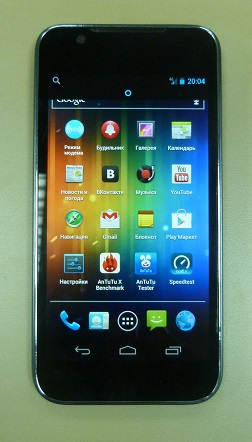

Above - the power button and the display lock, along with a headphone jack.
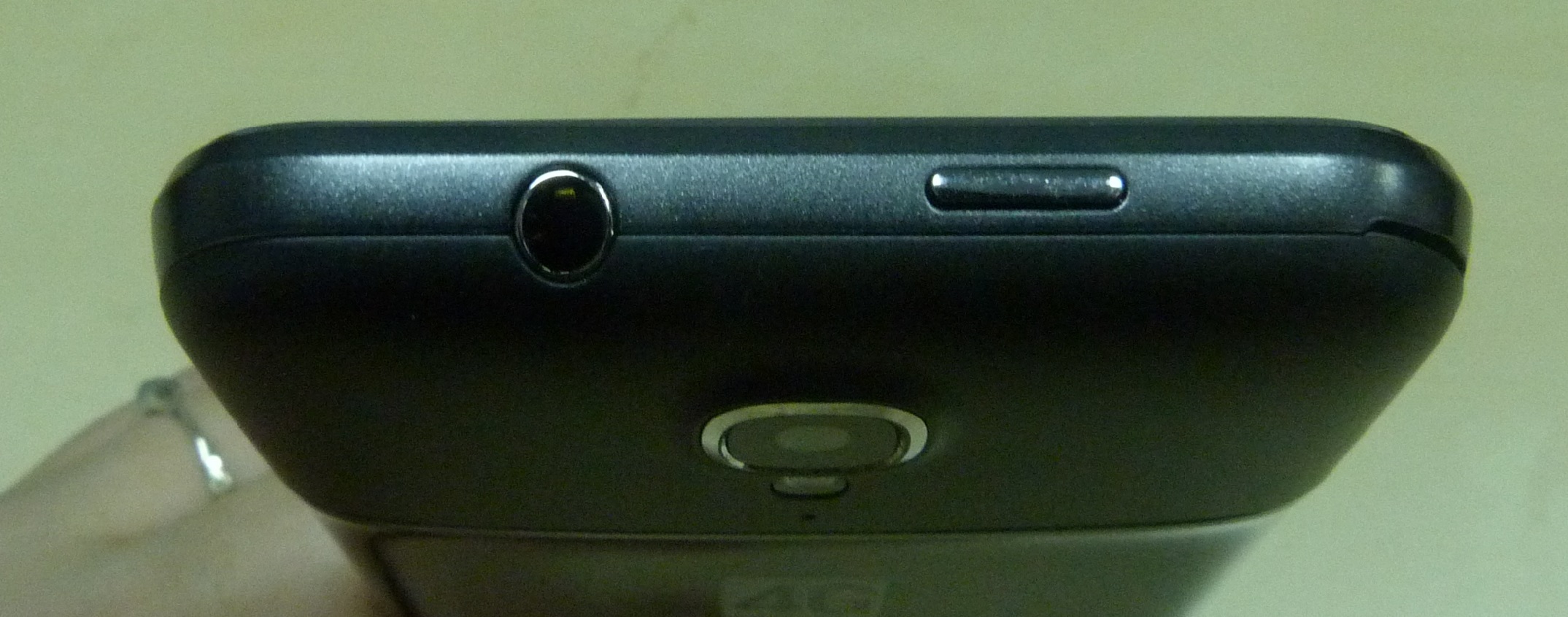
On the right side - the camera launch button (when the smartphone is in a locked state, it, alas, does not work)

On the left is the same "rocker" volume control and microUSB connector.

A lone microphone nestled below.
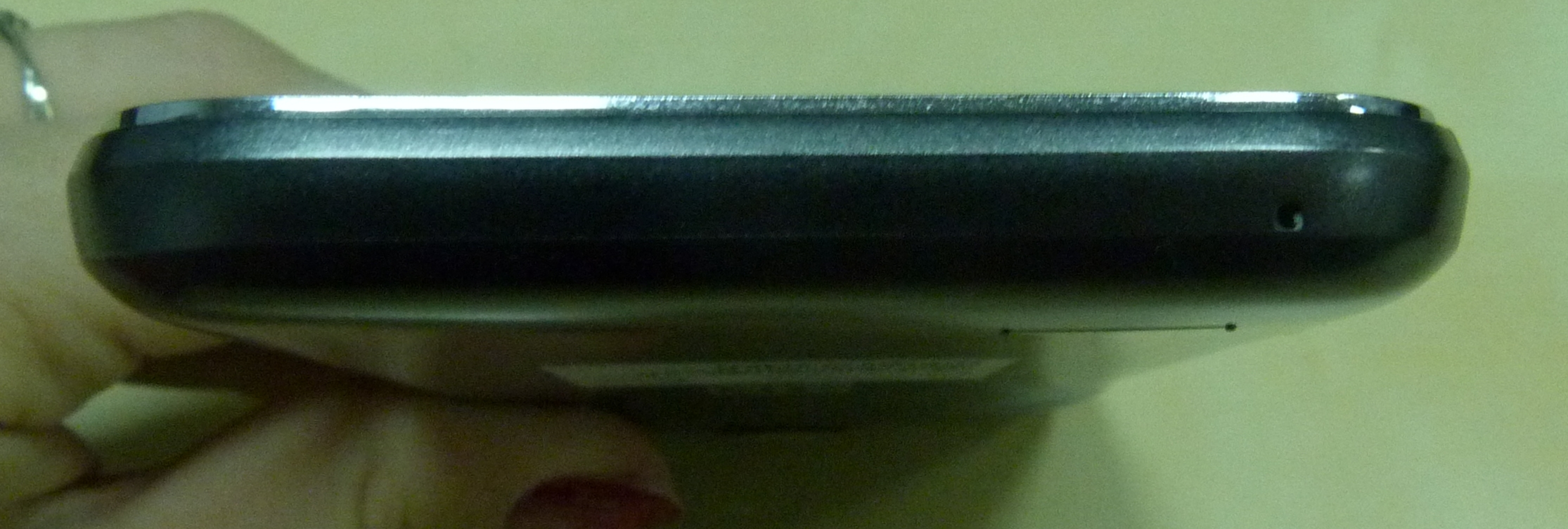
The back side is made of metal, and the small cover is made of rubberized plastic. On it (the cover) is a camera, a flash and a second microphone for noise reduction and audio capture during video recording. Down on the metal part of the case - the speaker.
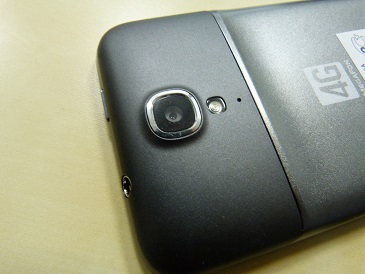
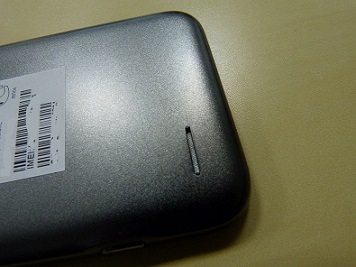
The front is a 4.5-inch IPS-screen with a resolution of 1280 x 720 pixels (the screen is quite responsive), a speaker, front-facing camera and a LED notification indicator.
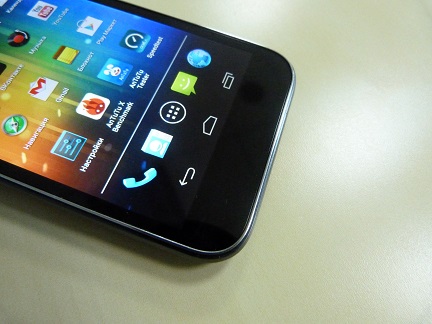
It is not clear why the buttons were carried to the screen, under it a lot of free space is strange.
The interface is as smart as Android 4.0.2 can allow. Android, by the way, is “naked”, it’s good, as for me.
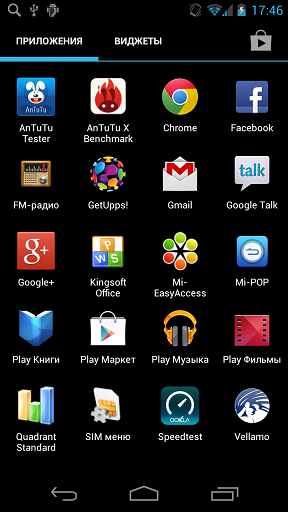
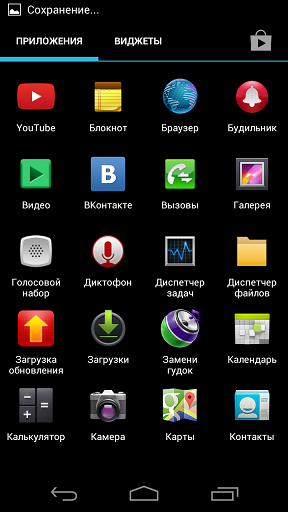
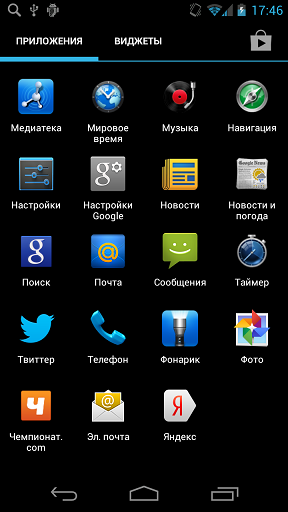
In addition to standard applications, MegaFon proprietary software is preinstalled:
• Replace beep - a kind of online store beeps.
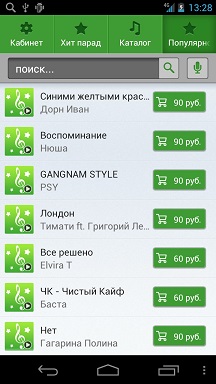
• GetUpps is an analogue of the Play Store, only from Megaphone.
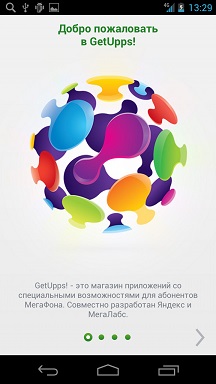
• Mi-Easy Access - setting up a quick call of six necessary applications immediately from the casting screen.
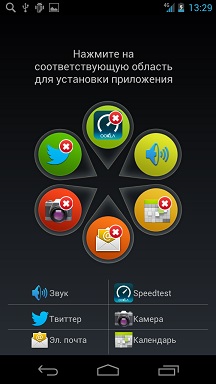
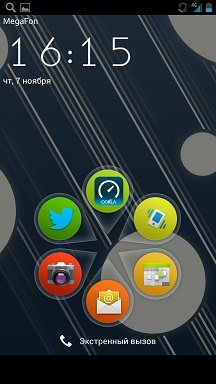
• News - application from Mail.ru
• Mi-POP - hides the navigation bar, thereby freeing up more usable space on the screen. But the keys are converted into one “Back” icon, which can be moved across the screen and from which 3 more keys “Home”, “Open application calls” and the “Wallpapers”, “Applications” and “Settings” keys are revealed.
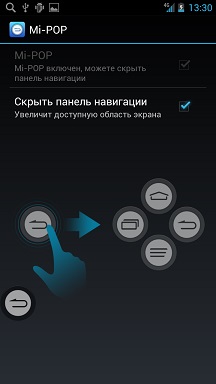

• Championship.com - sports news, live broadcast of matches, summary tables of ratings and results of competitions. In general, fans of football, hockey and others like them will be pleased.
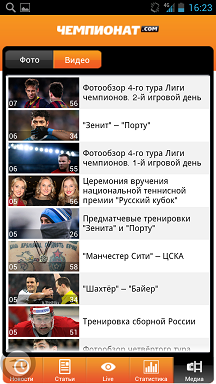

• Separate Yandex Search application. By the way, in the notification blind there is a search string from the same “Yandex” with the weather forecast.
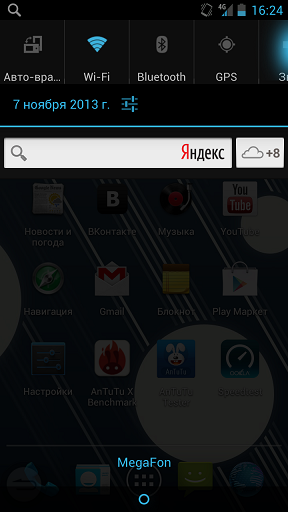
A few words about the camera: for a budget smartphone, it does not take off badly. Although what can be expected from the sensor in 8 megapixels, and even on the "budget"? Here are a couple of photo examples:

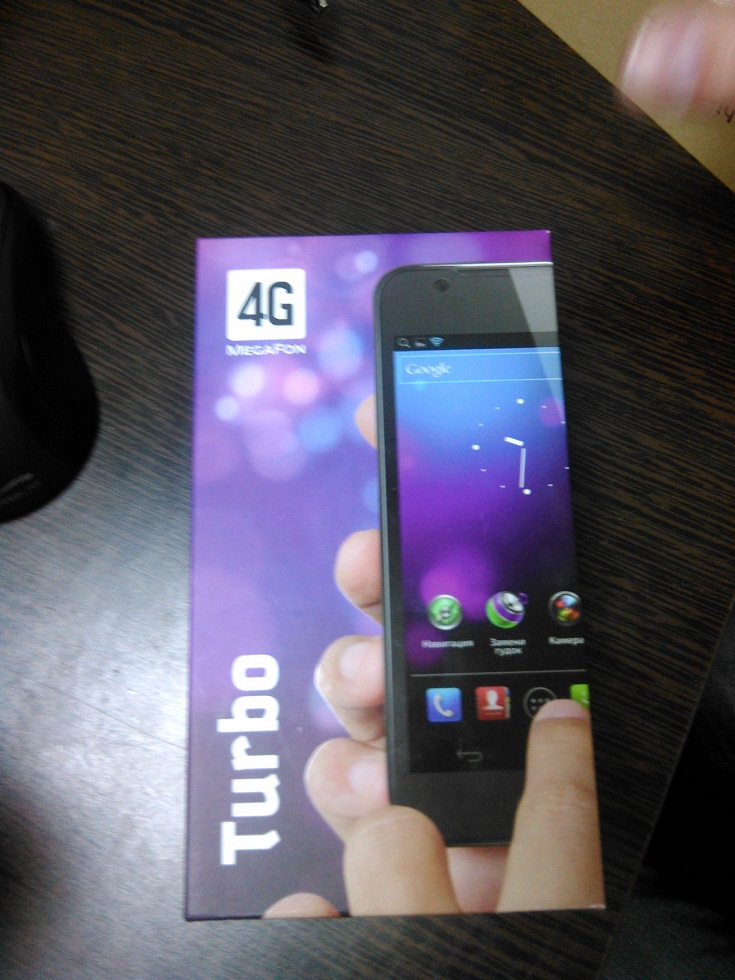
And some benchmark results:
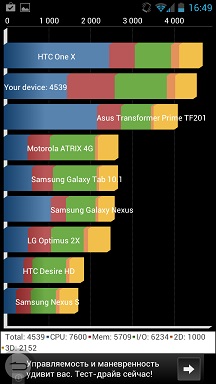
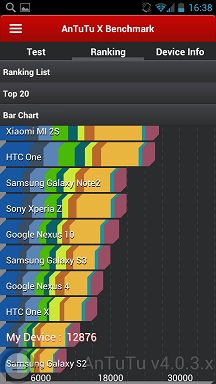
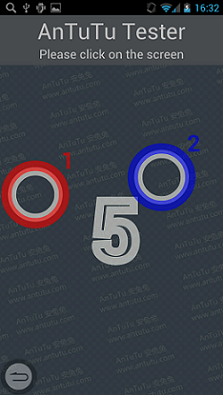
By the way, with a battery of 1 780 mAh, the smartphone lives up to two days with moderate use by the average person. I checked mail on it, social networks (constant push-notifications), rang a couple of times and turned on wi-fi. The graph shows that I still recharged my smartphone (not for long, from a laptop, literally an hour).

With a price of 10,770 rubles (about $ 326), in principle, a good smartphone for surfing the web. But, let me emphasize once again, it works only with SIM cards from MegaFon.
LTE to be! We'll see what other operators will come up with ... And also, wait until LTE smartphones become widely available and popular. Now with them, frankly, going to a mess. In most regions of the world, different frequency bands are used, and if you bring a 4G-smartphone to Russia from any other country, it is not at all the fact that he will become friends with “local” LTE. Meanwhile, adequate options with support for LTE, designed for Russia, so far very little. Especially budget. This device from MegaFon is one of the most inexpensive, but it costs as much as 11 thousand rubles. And I would like to see models for both 8 and 6 ... They say that soon MediaTek will introduce a new generation of chipsets with LTE support. Who knows - maybe within a year and a half, thanks to this, the situation with cheap LTE-suitable smartphones will change for the better.

What is LTE / 4G?
Of course, I’m a progressive girl who understands gadgets, but until recently I didn’t know (and didn’t understand) the difference between 3G and LTE (otherwise known as 4G). I think that the majority here should not describe the well-known advantages and disadvantages, but, nevertheless, I am sure that there are those who, like me, do not really understand all this. Let's figure it out together? :)
So, LTE is the technology behind the fourth generation cellular networks. Compared with the 3G family of technologies, the specified communication standard should a) provide a much higher data transfer speed in both directions and b) at the same time, it doesn’t have so much impact on the power consumption of devices as it was in the case of their work in 2G and 3G networks.
Well, in theory, everything looks very good, but what about in practice?
Few of the tariff options
The most affordable tariff option for MegaFon with high-speed Internet is called “Internet S”: you pay 390 rubles ($ 11) per month and get 3 GB of traffic at maximum speed (and what is the maximum speed here - I'll tell you a little later). As soon as these 3 GB are consumed, the Internet access is suspended and automatically resumes from the beginning of the new month, or when the “Prolong Speed” options are activated, and this, of course, is an additional waste of money.
At first, I wanted to be indignant, they say, just like that - only 3 GB, but for the sake of interest I decided to see how much traffic I usually “run” in a month. So, for six months, the maximum figure was 1 GB exactly! And this is despite the fact that I constantly update my mail, look through (and upload) photos on Instagram, sit on social networks (including listening to music on VKontakte, even though it’s with my current operator this is tantamount to torture), download files of various sizes ... In general, such an active Internet maniac. Therefore, I think, 3 GB is more than enough and still remains :)
And to whom 3 GB is not enough, they can choose the “Internet M” tariff, there is already 6 GB of traffic, but the corresponding cost is 690 rubles ($ 20) per month. Do you need it?

How fast is LTE?
So, with the tariff option sorted out. We turn to the most important thing - to the Internet and data transfer speeds.
I will begin, perhaps, with speed measurements using the Speedtest program (we all love to look at tsiferki, right?). The maximum data reception speed reached 17.28 Mbit / s, and transmissions - 19.74 Mbit / s on Lyublinskaya Street (Lyublino district, Moscow). I don’t know if it is possible to get a better result, but I didn’t achieve more. On the Internet, I read both less and more impressive results. I note that if you drive away from Lublinskaya Street inland, the Internet starts to disappear, and testing is sometimes impossible, because the program says that there is no connection - yet, the prevalence and breadth of coverage of the new generation leaves much to be desired.
The minimum speed I got when going down the Petrovsko-Razumovskaya metro station: data loading was 3.89 Mbit / s, and the transfer was 0.99 Mbit / s. In principle, it is understandable - in the subway, it’s not that there’s a problem with the Internet, but in general there’s a lot of trouble with communication (there are a lot of people).
')
Below are screenshots of measurements in different places in Moscow:
1) In an office building (area near metro station Petrovsko-Razumovskaya)

2) On the street (district near metro Petrovsko-Razumovskaya)

3) When going down the Petrovsko-Razumovskaya metro station


4) On the Red Square

5) On the street (Lublino district)

6) Houses (Lublin district)

4G speed measurements were carried out on the MegaFon 4G Turbo smartphone. This smartphone is positioned primarily as a solution for LTE networks from them, we will say, “author” (and, of course, it works only with a megaphone SIM card).
I also decided to check what the speed will be if you insert a SIM card into a smartphone where there is no LTE support. In the role of the experimental made Highscreen Alpha Ice, these are the results:

And now, for comparison, the MTS data transfer rate of the mobile Internet:

Called, feel the difference.
And now my personal impressions and experience of use:
• pages load in 3-4 seconds (as on a smartphone with LTE support, what is without it);
• social networks are updated in an instant;
• it is a pleasure to download programs from Google Play - 11 MB downloaded in just 8 seconds;
• music in “VKontakte” is loaded completely in 1-2 seconds;
• a five-minute video in HD quality on YouTube, you can safely watch and not be afraid that the video will not have time to upload to the right moment.
In general, after the brake internet from “you know who”, 4G from MegaFon is a real bliss and just an ode to speed! Seriously! And for such a speed it is not a sin to pay 390 rubles a month, although, of course, I would still like the option to be cheaper anyway.
And what about the smartphone?
I would like to tell a little about the MegaFon 4G Turbo smartphone, which was the main device for testing the LTE network.
This unit can be attributed to budget solutions, with average characteristics, among which LTE support stands out, which is currently very rare among budget smartphones.

I don’t see any reason to talk about the bundling - everything is standard: a charger, a USB cable, a wired hands-free headset, and a user manual.

Externally, 4G Turbo does not look quite normal. The front is a completely impersonal device, resembling a huge number of other modern smartphones. The only hint of the designer elegance in which is a thin metal edge, ringing the front panel around the edges. But there are already some differences behind: first, the upper part of the case where the camera is located is a couple of millimeters thick (about 10-11 mm), secondly, the smartphone has a non-removable battery, and in general it is non-separable, only a small lid opens Once in the enlarged part of the case, there are “sockets” for SIM and microSD cards under it.


Above - the power button and the display lock, along with a headphone jack.

On the right side - the camera launch button (when the smartphone is in a locked state, it, alas, does not work)

On the left is the same "rocker" volume control and microUSB connector.

A lone microphone nestled below.

The back side is made of metal, and the small cover is made of rubberized plastic. On it (the cover) is a camera, a flash and a second microphone for noise reduction and audio capture during video recording. Down on the metal part of the case - the speaker.


The front is a 4.5-inch IPS-screen with a resolution of 1280 x 720 pixels (the screen is quite responsive), a speaker, front-facing camera and a LED notification indicator.

It is not clear why the buttons were carried to the screen, under it a lot of free space is strange.
The interface is as smart as Android 4.0.2 can allow. Android, by the way, is “naked”, it’s good, as for me.



In addition to standard applications, MegaFon proprietary software is preinstalled:
• Replace beep - a kind of online store beeps.

• GetUpps is an analogue of the Play Store, only from Megaphone.

• Mi-Easy Access - setting up a quick call of six necessary applications immediately from the casting screen.


• News - application from Mail.ru
• Mi-POP - hides the navigation bar, thereby freeing up more usable space on the screen. But the keys are converted into one “Back” icon, which can be moved across the screen and from which 3 more keys “Home”, “Open application calls” and the “Wallpapers”, “Applications” and “Settings” keys are revealed.


• Championship.com - sports news, live broadcast of matches, summary tables of ratings and results of competitions. In general, fans of football, hockey and others like them will be pleased.


• Separate Yandex Search application. By the way, in the notification blind there is a search string from the same “Yandex” with the weather forecast.

A few words about the camera: for a budget smartphone, it does not take off badly. Although what can be expected from the sensor in 8 megapixels, and even on the "budget"? Here are a couple of photo examples:


And some benchmark results:



By the way, with a battery of 1 780 mAh, the smartphone lives up to two days with moderate use by the average person. I checked mail on it, social networks (constant push-notifications), rang a couple of times and turned on wi-fi. The graph shows that I still recharged my smartphone (not for long, from a laptop, literally an hour).

With a price of 10,770 rubles (about $ 326), in principle, a good smartphone for surfing the web. But, let me emphasize once again, it works only with SIM cards from MegaFon.
Conclusion
LTE to be! We'll see what other operators will come up with ... And also, wait until LTE smartphones become widely available and popular. Now with them, frankly, going to a mess. In most regions of the world, different frequency bands are used, and if you bring a 4G-smartphone to Russia from any other country, it is not at all the fact that he will become friends with “local” LTE. Meanwhile, adequate options with support for LTE, designed for Russia, so far very little. Especially budget. This device from MegaFon is one of the most inexpensive, but it costs as much as 11 thousand rubles. And I would like to see models for both 8 and 6 ... They say that soon MediaTek will introduce a new generation of chipsets with LTE support. Who knows - maybe within a year and a half, thanks to this, the situation with cheap LTE-suitable smartphones will change for the better.
Source: https://habr.com/ru/post/201270/
All Articles